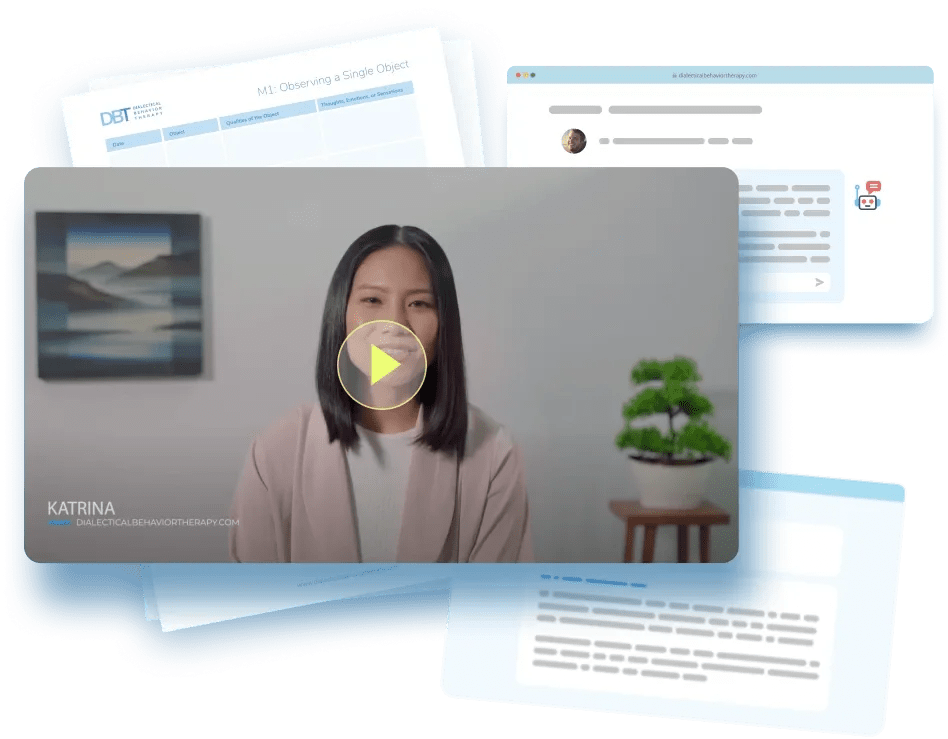BA3: Mastery and Pleasure Technique
Virtual Coach
Work step-by-step through the Behavioral Activation & Exposure exercise with the virtual coach.
Introduction
Doing more is only half the Behavioral Activation story; doing what lifts you matters just as much. Lewinsohn’s early BA trials showed that mood rises fastest when a day blends activities that give a sense of Mastery (productivity, competence) and Pleasure (enjoyment, fun). The Mastery and Pleasure Technique sheet lets you grade every task you completed from your Activity Schedule (BA1), so you can spot the high-return actions to repeat and the low-yield ones to drop.
Instructions
Goal: Rate every scheduled (and spontaneous) activity for 7 consecutive days.
Time needed: 5–7 minutes at day’s end.
Step 1: List Your Activities
Write down the tasks you actually did today. Both scheduled (✓) and spontaneous.
Example Entry: “Folded laundry,” “Called friend,” “Scrolled TikTok.”
Skip anything under 2 minutes. It won’t move the needle.
Step 2: Rate Mastery (M)
Score how accomplished or productive you felt doing each item. Use a 0–10 scale.
Laundry 7, Call 4, TikTok 1.
Use your first gut response. ≤ 3 seconds per rating.
Step 3: Rate Pleasure (P)
Score how enjoyable or fun the activity was, also from 0–10.
Laundry 3, Call 8, TikTok 5.
Low pleasure isn’t “bad” if mastery is high.
Step 4: Compute MP Score
(Optional) Add Mastery + Pleasure for each task (range: 0–20).
Laundry 10, Call 12, TikTok 6.
Anything ≥ 12 = a “high-yield” action.
Step 5: Highlight High-Yield
Circle any row with MP ≥ 12 or with a 7+ in either Mastery or Pleasure column.
Circle Laundry and Call.
These are your mood multipliers. Schedule more of them.
Step 6: Weekly Review
At the end of Day 7, rank your Top 5 activities and choose a few to repeat next week.
Example: Add “Call one friend daily.”
Drop or shrink activities rated below 6.
FAQs
Why separate Mastery and Pleasure. Can’t I just track mood?
Some tasks (taxes) boost Mastery but not Pleasure; others (Netflix) do the opposite. A balanced blend predicts the largest depression drop. Ratings reveal shortages in either column.
I keep giving 0-3 scores. Am I doomed?
No. Use data to experiment: swap low items for new ones, tweak timing, pair chores with music. Mood usually rises once average MP crosses 8.
Can I rate during the day instead of nightly?
Sure! Log on the spot if it helps recall accuracy. Just be consistent.
What if something felt good but “shouldn’t” (e.g., gaming)?
Rate honesty over judgment. High Pleasure hints at genuine reward pathways you can harness or moderate later.
Disclaimer
If you have any behavioral health questions or concerns, please talk to your healthcare or mental health care provider. This article is supported by peer-reviewed research and information drawn from behavioral health societies and governmental agencies. However, it is not a substitute for professional behavioral health advice, diagnosis, or treatment.

